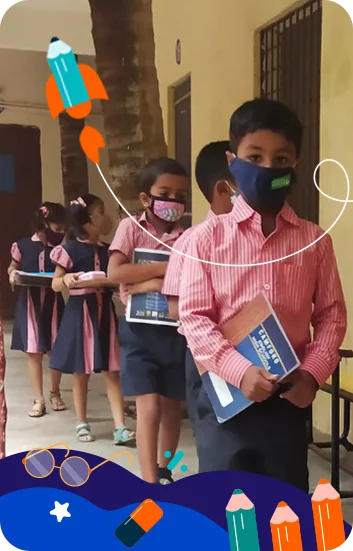Managing conflicts in the classroom- Tips for teachers
.png)
Give Your School The Lead Advantage
You haven’t really experienced being a teacher if you have never felt so frustrated that you wanted to simply walk out of a classroom. Even as adults, we have memories of when our teacher gave us a harsh punishment or shouted at the entire classroom. This is because they become such strong memories in our minds.
However, no teacher would want her students to have such memories. No teacher intends to lose her calm in front of her students. Not only does it impact the image of you as a teacher but it may also negatively impact your students for their life.
In this blog, we are going to list down the top 3 tips for effective classroom management even during the time of conflicts, whether the conflict is between you and students or just among the students:
1. Maintain your calm:
Teachers are the role models of most students. Hence portraying your best self in front of your students is of utmost importance. It is advisable for you to keep your cool at all times, even while handling conflicts. At all times, you should speak directly yet politely. The more direct you are about what exactly is the wrong done by a student or a group of students, the easier it will be for them to understand and rectify their behavior. No matter what, you should not let emotions get in the way of dealing with a particular situation. A pure objective yet empathetic approach will help you get the best resolution.
2. Listen and observe:
Active listening is one of the essential qualities required for effective classroom management, especially during conflicts. Active listening is listening attentively to a speaker, understanding what they’re saying, responding and reflecting on what’s being said, and retaining the information for later. This keeps both the listener and the speaker actively engaged in the conversation.
While using active listening in dealing with conflicts in your classroom, you need to listen to the students attentively. Acknowledge what the student or group of students is feeling and understand the reason behind their actions or words. If required, you can also talk to students individually rather than addressing them in front of everyone. This is especially applicable when someone feels wronged. Talking to them in front of everyone may escalate the matter as the student might feel that they are being humiliated in front of everyone. Rather than solving the issue, it might get worse. Also, be observant of the body language of students. It tells a lot about what the other person feels and helps identify whether they are telling the truth.
3. Empower students:
A very conventional approach towards classroom management includes creating a set of rules that every student needs to follow. However, today times are changing fast and parents and students are more aware than ever. Nobody likes to be in a strict environment where they need to do something out of fear. You can also make your classroom more free and fun by empowering students in deciding the classroom management rules. For example, you can decide as a community what the rules of the classroom are and take a consensus on what feels right and what feels wrong. Further, you can also get volunteers to ensure that the classroom management rules are followed. For example, you can have monitors on a monthly or weekly rolling basis to ensure that all students submit their homework copies on time. This way, you can avoid some students feeling bad because they followed the rules while some did not.
To conclude, there is no one size fits all approach to managing conflicts in the classroom. It comes through experience and observation. However, professional training combined with peer learning can help you gain the required skills faster.
At LEAD, we encompass the entire training and development module for teachers and school leaders to drive best classroom management practices and visible learning outcomes in students. It broadly comprises of:
- A 3-year certification program for teachers and leaders
- Teacher development workshops
- Online training through webinars
At LEAD Powered Schools, teachers get the best solutions to deliver quality education and get professional training. Find why 25,000+ teachers love LEAD Tell me more

.png)
.png)
.png)
.png)
